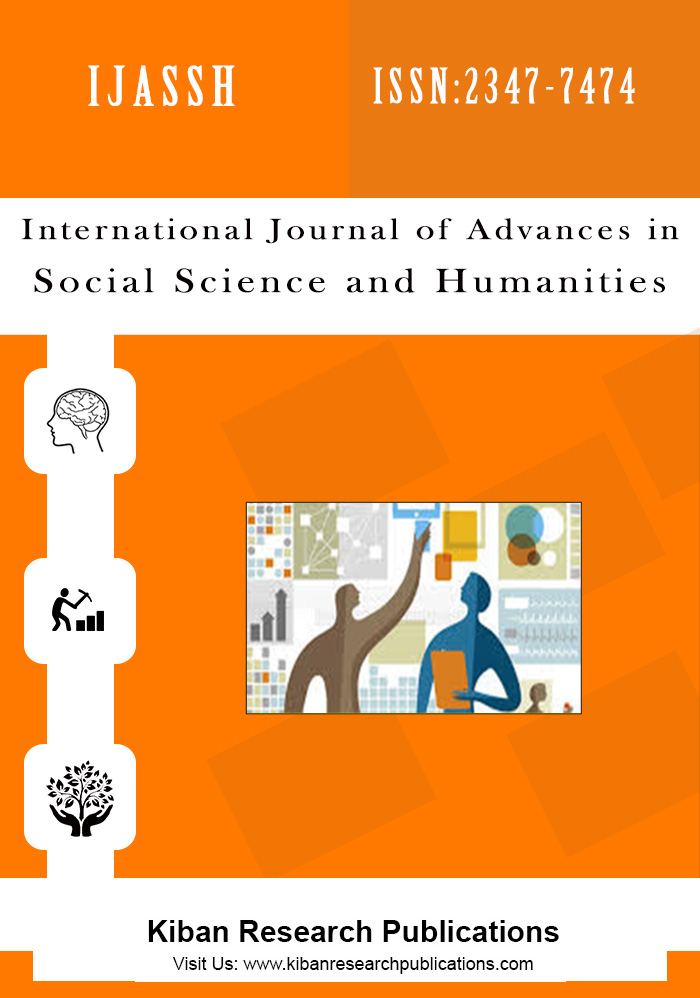A Discourse-Historical Analysis of Microsoft’s Identity Construction in Corporate Social Responsibility Reports
Abstract
With the increase of the public’s brand awareness, the display of corporate identity functions as a crucial tool to retain old customers and attract new ones. For this study, it digs into the discourse-historical construction of the corporate identity of Microsoft in letters to shareholders of Corporate Social Responsibility Reports (CSRR), investigating: 1) the key linguistic resources used in the texts at three different stages; 2) the discursive strategies formed by the choice of linguistic resources at each stage; 3) the similarities and differences of the identities constructed by the discursive strategies at the three stages. It turns out that Microsoft’s development promotes the identity transfer of itself at different stages.
Keywords: Discourse-historical analysis, Microsoft, identity construction, letters to shareholders of Corporate Social Responsibility Reports (CSRR), discursive strategies
References
Ji, Maoli., & Dong, Baoying. (2019). Research on the relationship between impression management of CSR report and cost of equity capital. Finance and Accounting Monthly, (16), 160-168.
Ji, Li., Zhang, Li., & Tian, Jing. (2016). An analysis on the readability of the CSR information disclosed by the Chinese public firms: A perspective from managerial power and restraint mechanism. Journal of Accounting and Economics, 30(01), 21-33.
Aiezza, M. C. (2015). “We may face the risksâ€...“risks that could adversely affect our face.†A corpus-assisted discourse analysis of modality markers in CSR reports. Studies in Communication Science, 15(1), 68-76.
European Commission. (2001). Green paper. Promoting a European framework for corporate social responsibility. Retrieved 20 May 2016 from the World Wide Web: http://europa.eu/rapid/press-release_DOC-01-9_en.
Milne, M., Tregidga, H., & Walton, S. (2009). Words not actions! The ideological role of sustainable development reporting. Accounting, Auditing and Accountability Journal, (22), 1211-1257.
Ditlev-Simonsen, C. D. & Wenstøp, S. (2012). Companies’ ethical commitment: an analysis of the rhetoric in CSR reports. Issues in Social and Environmental Accounting, (5), 65-81.
Filimon, A. I. (2009). Kyosei: An example of cultural keyword argumentatively exploited in corporate reporting discourse. Studies in Communication Sciences, (9), 131-52.
Malavasi, D. (2011). Doing well by doing good: A comparative analysis of Nokia's and Ericcson's corporate social responsibility reports in G. Grazone & M. Gotti (Ed.), Discourse, Communication and the Enterprise: Genres and Trends (pp. 193-212). Switzerland: Peter Lang.
Skulstad, A. (2008). Creating a "green" image in the public sphere: Corporate environmental reports in a genre perspective in R. Wodak & V. Koller (Ed.), Handbook of communication in the public sphere (pp. 181-201). De Gruyter.
Deegan, C. (2014). An overview of legitimacy theory as applied within the social and environmental accounting literature in J. Bebbington, J. Unerman & B. O’Dweyer (Ed), Sustainability accounting and accountability. (pp. 248-72). London; New York: Routledge.
Fuoli, M. (2012). Assessing social responsibility: A quantitative analysis of Appraisal in BP’s and IKEA’s social reports. Discourse & Communication, 6(1), 55-81.
Hart, C. (2014). Discourse, grammar and ideology: Functional and cognitive perspectives. Bloomsbury.
Bondi, M. (2016). The future in reports: prediction, commitment and legitimization in CSR. Pragmatics and Society, (7), 57-81.
Bucholtz, M., & Hall, K. (2005). Identity and interaction: A sociocultural linguistic approach. Discourse Studies, 7(4-5), 585-614.
Chen, Xinren. (2014). Current research on identity from the pragmatic perspective: Key issues and main approaches. Modern Foreign Languages, 37(05), 702-710+731.
Xiao, Kunxue., Chen, Shunyi., & Yang, Ziyou. (2018). New Era. New discourse. New vision. Review on “high-end forum of discourse research and language services under the ‘belt and road’ national initiative†[J]. Journal Of Tianjin Foreign Studies University, 25(04), 138-145.
Xu, Jun., & Xia, Rong. (2016). A study of identity construction in business letters from the perspective of SFL. Business Languages and Communication, (02), 15-21.
Yi, Li. (2014). Identity construction in company promotional discourse: A case study of company overview of AT&T. Journal of Guangdong Technical College of Water Resources and Electric Engineering, 12(03), 76-80.
Xia, Huiyan., & Fu, Zhao. (2014). How does discourse of the advertisement constitute Chinese women’s social identity: From critical perspective. Journal of Hebei University(Philosophy and Social Science), 39(05), 55-58.
Wu, Nan., & Zhang, Jingyuan. (2019). Discursive strategies for the construction of Chinese and American corporate identities. Modern Foreign Languages (Bimonthly), 42(2), 220-230.
Wodak, R. (1990). The discursive construction of national identities. Discourse & Society, 10(2), 149-173.
Wodak, R. & Meyer. M. (2001). Methods of critical discourse analysis. London: Sage Publications.
Hyland, K. (2005). Metadiscourse[M]. London: Continuum.
Wodak, R. & Meyer. M. (2006). Methods of critical discourse studies. London: Sage Publications.
Chen, Danhong. (2009). CDA of intertextuality in speeches of US-Sino political leaders. Foreign Languages and Their Teaching, (11), 12-15.
Archie B. Carroll. (1991). The pyramid of corporate social responsibility: Toward the moral management of organizational stakeholders [J]. Business Horizons, 34 (4), 39-48.
Cross, G. (1990). A bakhtinian exploration of factors affecting the collaborative writing of an executive letter of an annual report. Research in the Teaching of English, 24(2), 173-203.
Miller, R., Power, F. & Meyer, R. (1983) Personal Finance Today. Si Paul: West Publishing.




